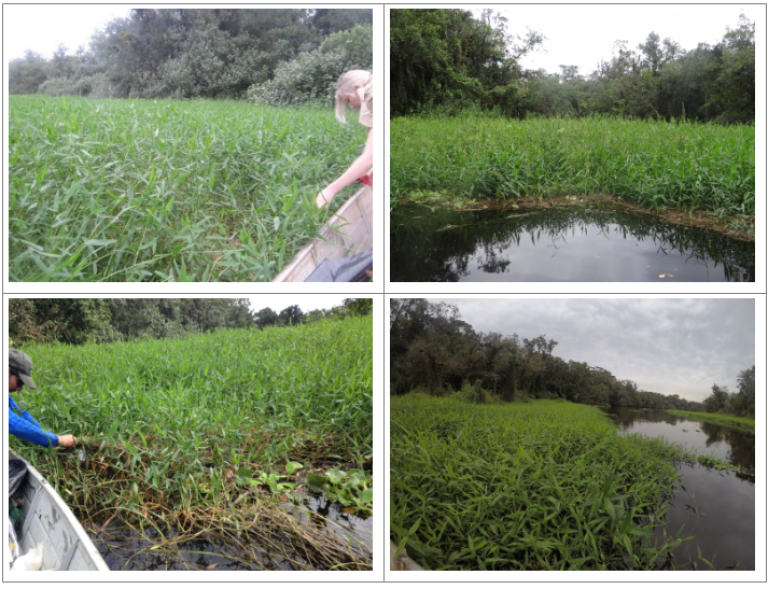Case study site: Guaraguaçu River (Brazil)
Urochloa arrecta in the Guaraguaçu River (Brazil)
U. arrecta is an invasive aquatic grass which in the last years produced mass developments in several water bodies in South Brazil. One of these is the River Guaraguaçu, a tidal river. The plant biomass affects the use of the river for navigation, jeopardizes environmental quality for tourism and fisheries, and probably affects the diversity of native species.
The River Guaraguaçu is in LAGAMAR, a key region for biodiversity conservation in South Brazil harbouring several endangered species. The river is subject to anthropogenic pollution, climate change, and other invasive species such as catfish which may benefit from the dense U. arrecta beds. Management of U. arrecta has not yet started, but is under discussion.
The stakeholder involved in this case study is the Instituto Ambiental do Paraná, the environmental agency responsible for managing the area.
